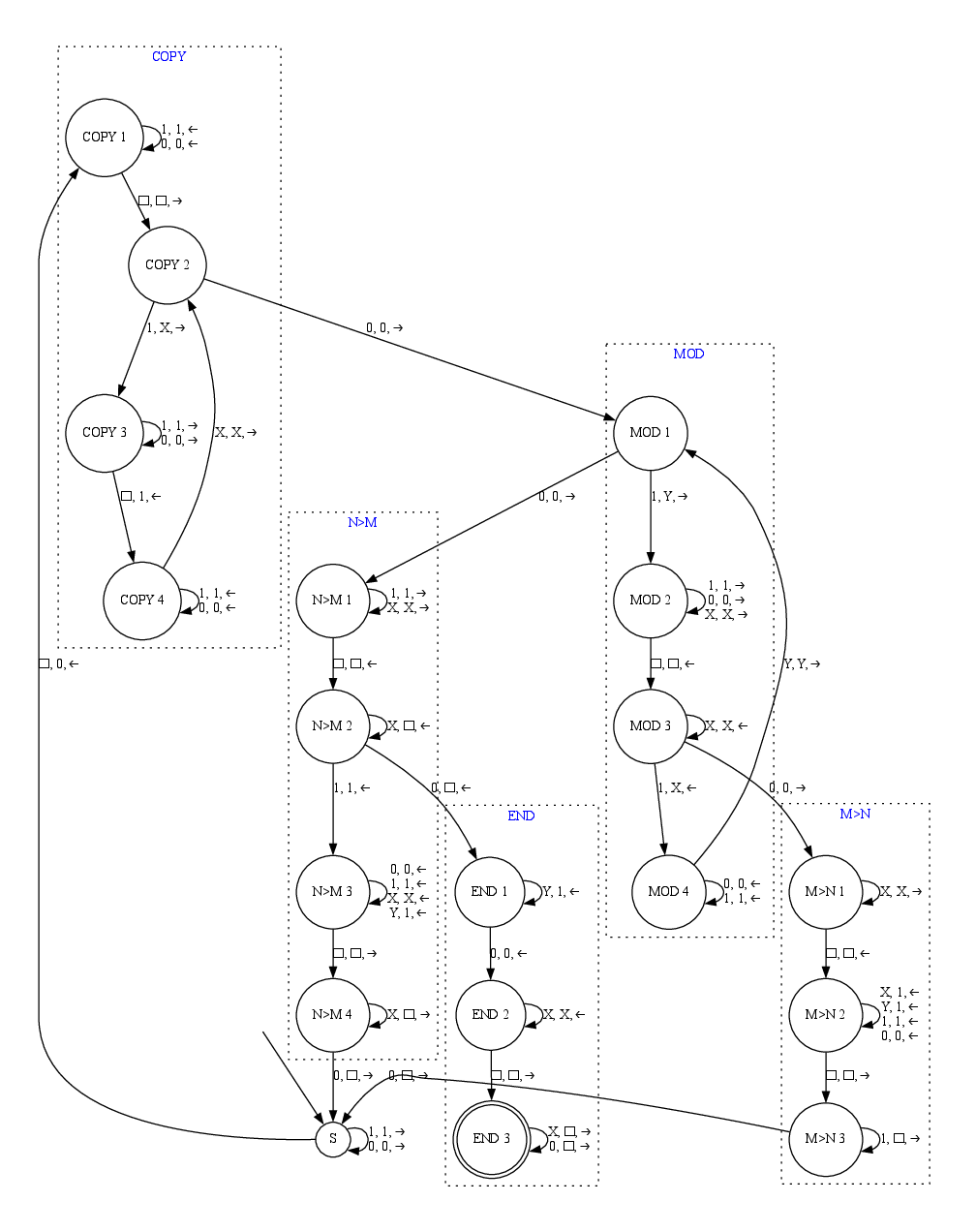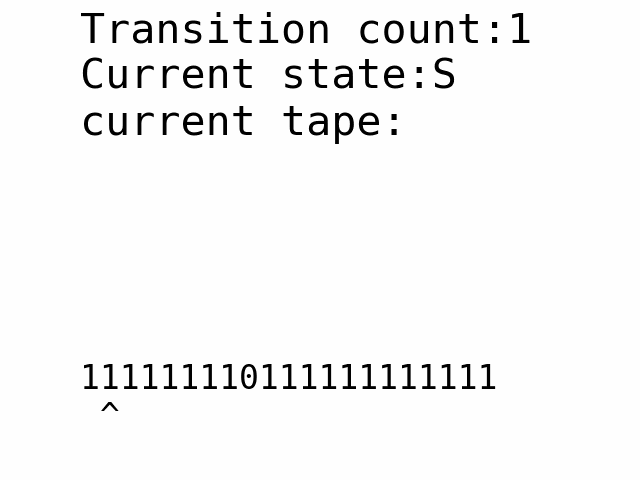This project is a simple Turing machine that I originally wrote to check my homework. It eventually got a little out of hand, and now it can generate animations and state diagrams as well as test.
- Begins at left-most symbol of input tape
- States are defined using a python dictionary (you can actually use Json!).
- Each state has a list of transitions associated with it
- Transitions are defined as:
["current symbol", "replacement symbol", "direction to move", "next state"]
import turing
states = { "S": {
"transitions": [
["1", "3", "->", "S"],
[" ", " ", "->", "F"],
],
},
"F": {
"transitions": [],
"final": True
},
}
T = turing.machine(states, debug=True)
T.plot("state_diagram")
T.test("11111011")
# will animate most recent test
T.animate("usage.gif")I'll let the function of the above machine be an exercise for the reader.
A common function one might want to implement with a Turing machine is the greatest common denominator (GCD) function.
This is the recursive python version:
def gcd(n, m):
if m != 0:
return gcd(m, n % m)
else:
return n
gcd(8, 12)
# outputs 4The following Turing machine takes 2 numbers in unary 111111110111111111111 (8,12) and calculates the GCD.

